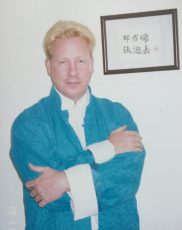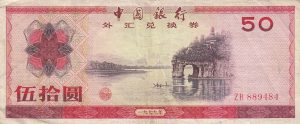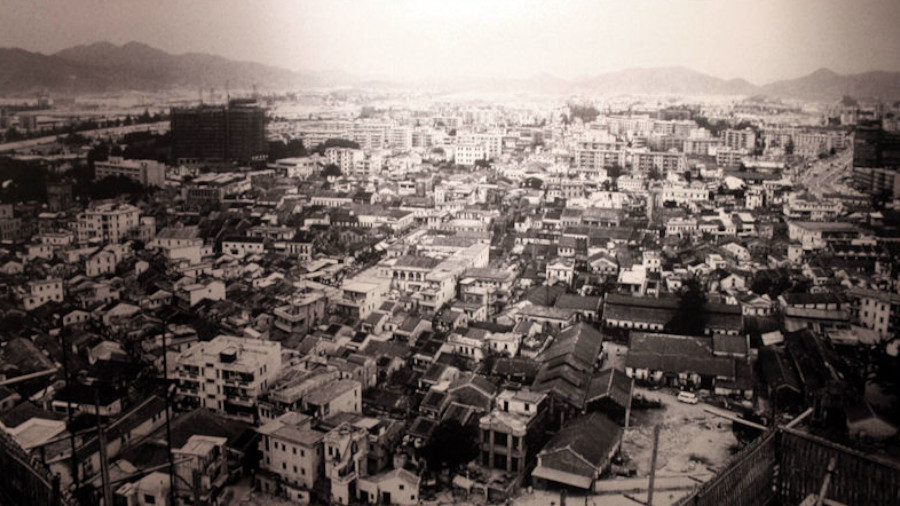Shenzhen’s 40th Anniversary: What Those Early Years Were Like
Op/Ed by Chris Devonshire-Ellis
The south China city of Shenzhen has been celebrating its 40th anniversary this past week, with much media attention paid to how the city famously grew from ‘a small fishing village’ to the metropolis of 13 million it is today. I first visited Shenzhen back in 1987, when one could obtain special visas to visit from Hong Kong. It was China’s first, experimental ‘Special Economic Zone’ (SEZ) and could only be accessed by obtaining a visa which would only allow access to the designated Shenzhen area. The city was effectively ring fenced off from the rest of mainland China in a 5 kilometer radius around the SEZ by a substantial, and well policed wall manned by checkpoints.
This rather exciting, yet somewhat Berlinesque methodology was to protect the rest of the Motherland from capitalistic notions should the Shenzhen experiment not work. It was also somewhat problematic for Chinese nationals too – craftily, Shenzhen airport – which in those days was also named ‘Hong Qiao’ as is Shanghai’s original airport – was located outside the perimeter. Shenzhen was a city with an airport, but it couldn’t be used to actually get there – without a permit. That also meant you couldn’t fly into Shenzhen airport without a valid Chinese Visa – something that was very difficult to obtain back then without full investigations as to who you were by the China International Travel Service (CITS). Applications from foreign nationals could take over a month.
Hong Kong of course was the major driver in Shenzhen’s early days, a hot bed of British capitalism all getting rich from the benefit of the proximity of nearby Chinese factories with cheap labor. ‘Made in Hong Kong’ became ‘Made in China’ pretty rapidly in the early 1980’s as toy manufacturers and early electronic products shifted production. Business dinners were conducted in lavishly decorated basement Chinese restaurants, where the finest French Champagne Cognac – not wine, that would happen later – and hard to find, green packets of China Panda brand cigarettes were traded along with Wanchai bars in the style of Suzie Wong.

Chris Devonshire-Ellis, in Shenzhen in 1994. Wearing Shanghai Tang, which opened its first store in Hong Kong that year. It is now part of Richemont.
Trips to Shenzhen were an exciting diversion away from Hong Kong, which despite the handover having been signed off in 1984 was still booming. 1997 seemed a long way away, and became the name and venue for one of Hong Kong’s most venerable establishments, a place to see and be seen. Allan Zeman ruled Hong Kong’s nightlife in those days and would cruise around Lan Kwai Fong, watching the crowds spill in and out of bars housed in buildings he owned. The Street of the Flower Sellers became a noisy and thrilling spot to spend a Friday night. Many were content with their lot, but it was still not enough for me. Travel to Shenzhen was an adventure, akin to a Trans-Siberian trip. “Don’t go to China Chris” an ex-boss once told me “It’s dirty, horrible, nothing works and they’ll rip you off.” Of course, he was right. But it didn’t cure the allure of the Oriental mysteries of what lay beyond.
What lay beyond depended on how you visited. There were two ways to get to Shenzhen, overland to the crossing at Lo Wu, which was a fairly standard and unexciting trip on the MTR then across immigration into a dark, rather unimpressive Chinese immigration hall, or to take the ferry to Shekou. The former was convenient for weekend shopping, as already market stalls had sprung up on the Chinese side in the cavernous Lo Wu Square, which itself had only recently been created by demolishing the old Hutongs that existed around the Lo Wu precinct. Coming out into Lo Wu one entered a different world. Mainland China. It was dirty, and busy. Chaotic even, as hustlers began hustling for Hong Kong dollars. It was illegal to possess RMB in those days and as a foreigner one had to use Foreign Exchange Certificates, or FEC. These could be purchased in Hong Kong prior to crossing the border and were exchanged at a 1 to 1 face value for the Yuan but sold at a ten percent premium.

Foreigners could only use these and could only exchange them for goods in Friendship Stores, where bottles of Johnnie Walker Red label whisky and Marlboro Cigarettes, along with various garish Chinese handcrafts were on display, or at expensive ‘foreigner only’ restaurants. That limited where one could spend FEC. The mainland Chinese wanted FEC to be able to purchase otherwise unobtainable imported goods, and people involved in the exchange were the solution. Of course scams happened, as they do any where. Valid FEC changed for a roll of cheaply counterfeited RMB banknotes, or dubious exchange rate deals were occasionally spiced up with cries of “Police!” and the vendor running away, with your cash in hand. At that time, it was illegal for foreigners to possess RMB, but local restaurants and stores didn’t care about taking it from you anyway.
Shenzhen in those days pretty much revolved around Lo Wu, with outer lying districts and roads all still developing. There wasn’t much beyond the main square, and the main Heping Avenue that has now developed into Shenzhen’s main thoroughfare with huge steel and glass cathedrals to Louis Vuitton, Hermes and Prada dotting the avenue. I recall it flooding, and locals getting around on canoes. Then, the Shangri-La Hotel, the swankiest in the city would have to close as the rising waters from the Shenzhen River surged into Chinese St. Marks Square. Once, the waters wrecked seven Rolls-Royce cars parked in the basement. Shenzhen was becoming rich.
The Shangri-La’s ‘Henry J. Beans’ outlet became an expat drinking haunt in those days. Yet cultural clashes still came to the fore. Henry’s, a US franchise decided they wanted the bar staff to dress up in baseball type gear, which was fair enough except for the green baseball hats they wanted them to wear. “Wearing a Green Hat” in Mandarin is a euphemism for being cuckolded.
It seems incredible now, with the city possessing the 599-meter Ping An Financial Centre – the fourth highest building in the world – that in 1992 the Shanghai Hotel, on Shenzhen’s Heping Road held the city record. It was seven storeys high.
The other side of Shenzhen, accessible by ferry, was Shekou. It was a 60-minute drive from downtown Shenzhen to Shekou in those days, so getting the ferry was the better option. For a young, adventure seeking expat it was also the better option, as it had what was at the time, China’s largest expat population. That was due to the international oil and gas companies drilling in the South China Sea – Shekou was a convenient deep-water port and again could be isolated. Travelling to Shekou from Hong Kong was like entering a totally different country, and it is one that doesn’t exist today. Large, rowdy Texan, Scottish and Danish oil riggers would pack the few bars, and order beer after beer and in 1990, often accompanied by starstruck girls: the population of women to men in Shenzhen then was 7 to 1.
Consistent with the flavor of Shenzhen at this time, it is not surprising that Dezan Shira & Associates’ first ever client was handling a trademark registration for the ‘Red Rooster’ pub – the choice of bar for expats to hang out. I was also partially responsible for opening the first-ever licensed bar in China, the Snake Pit, which still exists today.
I’d visit Shenzhen for the weekends, and enjoy the totally different vibe, excitement and mayhem that early Shenzhen provided. In the city, the Black Cat Bar provided entertainment and techno, with many young people partying hard. The USSR had just ceased to exist and young Russians wanted to have a good time, free from the dead hand of Gorbachov’s regime. Shenzhen for many offered that combination of a wild east, yet a sense of familiar Soviet conformity. In Shekou, bar streets was populated by entrepreneurs from all over China – one bar would have staff from Hebei, the other Sichuan, followed by Heilongjiang, Hunan and Yunnan bars and so on. They couldn’t always make out their regional dialects when talking with each other, so used to draw characters in the air with their fingers to get across what they were trying to say.
By 1992 I’d set up Dezan Shira’s first China office in the city, when everyone else wanted to go to Beijing or Shanghai. But Shenzhen had a more competitive, 12 percent tax base and I knew manufacturing clients would come. Shenzhen had a buzz, an electricity and a hidden, secret knowledge that what was going on would change China for good. Forty years on from then, we all know the result.
Chris Devonshire-Ellis is the Founding Partner and Chairman of Dezan Shira & Associates. Today, the firm has 28 offices across Asia, including Hong Kong and 13 in mainland China. Please contact Chris via asia@dezshira.com or visit us at www.dezshira.com.
- Previous Article Corporate Budget Planning 2021: Disruptions, China’s Consumer Market, Emerging ASEAN, the Digital RMB, and BRI Hot Spots
- Next Article Die führenden Trends im chinesischen Dienstleistungssektor nach der Beeinträchtigung durch COVID-19










